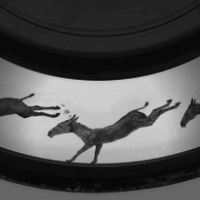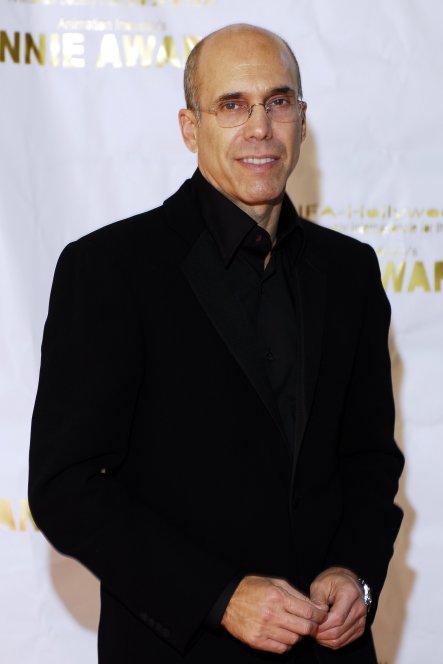|
Diacope
Diacope ( ) is a rhetorical term meaning repetition of a word or phrase that is broken up by a single intervening word, or a small number of intervening words. It derives from a Greek word ''diakopḗ,'' which means "cut in two". Diacopae (or diacopes) are used in writing to emphasize or describe something. Like other forms of repetition, diacope helps express strong emotions, or help give weight to the repeated word. Types of Diacope Diacope can be utilized in three ways in writing. They are: # Vocative Diacope: In this type of diacope, the repeated words are separated by nouns that are directly addressed. The noun must address something, or someone. # Elaborative Diacope: Here an adjective is used between the repeated words to enhance the meaning of the repeated word. # Extended Diacope: Sometimes a word is repeated thrice for even more emphasis. Examples * "Bond. James Bond." — James Bond * "Put out the light, and then put out the light." — Shakespeare, ''Othello'', Act ... [...More Info...] [...Related Items...] OR: [Wikipedia] [Google] [Baidu] |
Epizeuxis
In rhetoric, epizeuxis, also known as palilogia, is the repetition of a word or phrase in immediate succession, typically within the same sentence, for vehemence or emphasis. A closely related rhetorical device is diacope, which involves word repetition that is broken up by a single intervening word, or a small number of intervening words. As a rhetorical device, epizeuxis is utilized to create an emotional appeal, thereby inspiring and motivating the audience. However, epizeuxis can also be used for comic effect. Examples * "Never give in — never, never, never, never, in nothing great or small, large or petty, never give in except to convictions of honour and good sense. Never yield to force; never yield to the apparently overwhelming might of the enemy."—Winston Churchill * "Tomorrow, and tomorrow, and tomorrow/Creeps in this petty pace from day to day/To the last syllable of recorded time..."—William Shakespeare, ''Macbeth'' * "O dark, dark, dark, amid the blaze of noo ... [...More Info...] [...Related Items...] OR: [Wikipedia] [Google] [Baidu] |
Rhetoric
Rhetoric is the art of persuasion. It is one of the three ancient arts of discourse ( trivium) along with grammar and logic/ dialectic. As an academic discipline within the humanities, rhetoric aims to study the techniques that speakers or writers use to inform, persuade, and motivate their audiences. Rhetoric also provides heuristics for understanding, discovering, and developing arguments for particular situations. Aristotle defined rhetoric as "the faculty of observing in any given case the available means of persuasion", and since mastery of the art was necessary for victory in a case at law, for passage of proposals in the assembly, or for fame as a speaker in civic ceremonies, he called it "a combination of the science of logic and of the ethical branch of politics". Aristotle also identified three persuasive audience appeals: logos, pathos, and ethos. The five canons of rhetoric, or phases of developing a persuasive speech, were first codified in classical Rome: i ... [...More Info...] [...Related Items...] OR: [Wikipedia] [Google] [Baidu] |
Annabel Lee
"Annabel Lee" is the last complete poem composed by American author Edgar Allan Poe. Like many of Poe's poems, it explores the theme of the death of a beautiful woman.Meyers, Jeffrey. ''Edgar Allan Poe: His Life and Legacy''. New York: Cooper Square Press, 1992. p. 243. The narrator, who fell in love with Annabel Lee when they were young, has a love for her so strong that even angels are envious. He retains his love for her after her death. There has been debate over who, if anyone, was the inspiration for "Annabel Lee". Though many women have been suggested, Poe's wife Virginia Eliza Clemm Poe is one of the more credible candidates. Written in 1849, it was not published until shortly after Poe's death that same year. Synopsis The poem's narrator describes his love for Annabel Lee, which began many years ago in a "kingdom by the sea". Though they were young, their love for each other burned with such intensity that even angels were envious. For this reason, the narrator believes ... [...More Info...] [...Related Items...] OR: [Wikipedia] [Google] [Baidu] |
Tmesis
In its strictest sense, tmesis (; plural tmeses ; Ancient Greek: ''tmēsis'' "a cutting" < ''temnō'', "I cut") is the dividing of a word into two parts, with another word inserted between those parts, thus forming a . Example: "un-freaking-believable" (an emphatic way to say "unbelievable"). In a broader sense, ''tmesis'' is a set phrase, such as a , with one or more words interpolated within, thus creating a separate phrase. Verbs Tmesis of ed verbs (whereby the prefix is separated from the simple verb) was thought to be an original feature of the |
Epanalepsis
Epanadiplosis (from Ancient Greek ἐπαναδίπλωσις/epanadíplôsis, from ἐπί/epí, “on”, ἀνά/aná, “again”, and διπλόος/diplóos, “double”, “doubling in succession”) is a figure of speech in which the same word is used at the end of a clause as at the beginning of a preceding clause. The opposite figure is anadiplosis. It allows for melodic and rhythmic interplay to suggest emphasis or humor. Epanadiplosis can also be used to emphasize a word, a group of words, or an idea. Epanadiplosis is also a narrative figure used in many literary genres, which is called “narrative epanadiplosis”. It's the repetition of an initial scene or motif (in the incipit) at the plot's end (or clausule). It suggests that the narrative is closed in on itself. Nature and limits of the figure Epanadiplosis is a figure of repetition affecting syntactic position (the order of words in the sentence). For César Chesneau Dumarsais, the figure appears “when, of ... [...More Info...] [...Related Items...] OR: [Wikipedia] [Google] [Baidu] |
Paul Harvey
Paul Harvey Aurandt (September 4, 1918 – February 28, 2009) was an American radio broadcaster for ABC News Radio. He broadcast ''News and Comment'' on mornings and mid-days on weekdays and at noon on Saturdays and also his famous ''The Rest of the Story'' segments. From 1951 to 2008, his programs reached as many as 24 million people per week. ''Paul Harvey News'' was carried on 1,200 radio stations, on 400 American Forces Network stations, and in 300 newspapers. Early life Harvey was born in Tulsa, Oklahoma, and was the son of a policeman who was killed by robbers in 1921. He made radio receivers as a young boy, and attended Central High School (Tulsa, Oklahoma), Tulsa Central High School, where he was two years ahead of future actor Tony Randall. Teacher Isabelle Ronan was "impressed by his voice". On her recommendation, he started working at KTSB (AM), KVOO in Tulsa in 1933 helping to clean up when he was 14. He eventually was allowed to fill in on the air by reading commerc ... [...More Info...] [...Related Items...] OR: [Wikipedia] [Google] [Baidu] |
Odette (1950 Film)
''Odette'' is a 1950 British war film based on the true story of Special Operations Executive French agent, Odette Sansom, living in England, who was captured by the Germans in 1943, condemned to death and sent to Ravensbrück concentration camp to be executed. However, against all odds she survived the war and testified against the prison guards at the Hamburg Ravensbrück trials. She was awarded the George Cross in 1946; the first woman ever to receive the award, and the only woman who has been awarded it while still alive. Anna Neagle plays Odette Sansom and Trevor Howard plays Peter Churchill, the British agent she mainly worked with and married after the war. Peter Ustinov plays their Jewish radio operator Alex Rabinovitch, Cr de Guerre, OBE, MiD. Colonel Maurice Buckmaster, who was head of the SOE's French Section, played himself in the film, as did Paddy Sproule, another FANY female SOE agent. Plot In response to a radio broadcast request for photographs of France, mot ... [...More Info...] [...Related Items...] OR: [Wikipedia] [Google] [Baidu] |
The Life That I Have
"The Life That I Have" (sometimes referred to as "Yours") is a short poem written by Leo Marks and used as a poem code in the Second World War. In the war, famous poems were used to encrypt messages. This was, however, found to be insecure because enemy cryptanalysts were able to locate the original from published sources. Marks countered this by using his own written creations. "The Life That I Have" was an original poem composed on Christmas Eve 1943 and was originally written by Marks in memory of his girlfriend Ruth, who had just died in a plane crash in Canada. On 24 March 1944, the poem was issued by Marks to Violette Szabo, a British agent of Special Operations Executive who was eventually captured, tortured and killed by the Nazis. It was made famous by its inclusion in the 1958 movie about Szabo, ''Carve Her Name with Pride'', where the poem was said to be the creation of Violette's husband Etienne. (Marks allowed it to be used under the condition that its author not be ... [...More Info...] [...Related Items...] OR: [Wikipedia] [Google] [Baidu] |
Leo Marks
Leopold Samuel Marks, (24 September 1920 – 15 January 2001) was an English writer, screenwriter, and cryptographer. During the Second World War he headed the codes office supporting resistance agents in occupied Europe for the secret Special Operations Executive organisation. After the war, Marks became a playwright and screenwriter, writing scripts that frequently utilised his war-time cryptographic experiences. He wrote the script for ''Peeping Tom'', the controversial film directed by Michael Powell that had a disastrous effect on Powell's career, but was later described by Martin Scorsese as a masterpiece. In 1998, towards the end of his life, Marks published a personal history of his experiences during the war, '' Between Silk and Cyanide'', which was critical of the leadership of SOE. Early life Marks was born into a devout Jewish family. He was the son of Benjamin Marks, the joint owner of Marks & Co, an antiquarian bookseller in Charing Cross Road, London. He was intr ... [...More Info...] [...Related Items...] OR: [Wikipedia] [Google] [Baidu] |
Edgar Allan Poe
Edgar Allan Poe (; January 19, 1809 – October 7, 1849) was an American writer, poet, editor, and literary critic who is best known for his poetry and short stories, particularly his tales involving mystery and the macabre. He is widely regarded as one of the central figures of Romanticism and Gothic fiction in the United States and of early American literature. Poe was one of the country's first successful practitioners of the short story, and is generally considered to be the inventor of the detective fiction genre. In addition, he is credited with contributing significantly to the emergence of science fiction. He is the first well-known American writer to earn a living exclusively through writing, which resulted in a financially difficult life and career.. Poe was born in Boston. He was the second child of actors David Poe Jr., David and Eliza Poe, Elizabeth "Eliza" Poe. His father abandoned the family in 1810, and when Eliza died the following year, Poe was taken in by ... [...More Info...] [...Related Items...] OR: [Wikipedia] [Google] [Baidu] |
Word
A word is a basic element of language that carries semantics, meaning, can be used on its own, and is uninterruptible. Despite the fact that language speakers often have an intuitive grasp of what a word is, there is no consensus among linguistics, linguists on its definition and numerous attempts to find specific criteria of the concept remain controversial. Different standards have been proposed, depending on the theoretical background and descriptive context; these do not converge on a single definition. Some specific definitions of the term "word" are employed to convey its different meanings at different levels of description, for example based on phonology, phonological, grammar, grammatical or orthography, orthographic basis. Others suggest that the concept is simply a convention used in everyday situations. The concept of "word" is distinguished from that of a morpheme, which is the smallest unit of language that has a meaning, even if it cannot stand on its own. Words a ... [...More Info...] [...Related Items...] OR: [Wikipedia] [Google] [Baidu] |
Pocahontas (1995 Film)
''Pocahontas'' is a 1995 American animated musical historical drama film loosely based on the life of Powhatan woman Pocahontas and the arrival of English settlers from the Virginia Company. The film romanticizes Pocahontas's encounter with John Smith and her legendary saving of his life. It was produced by Walt Disney Feature Animation and released by Walt Disney Pictures. The film was directed by Mike Gabriel and Eric Goldberg and produced by Jim Pentecost, from a screenplay written by Carl Binder, Susannah Grant, and Philip LaZebnik. It stars the voices of Irene Bedard and Mel Gibson as Pocahontas and Smith, respectively, with David Ogden Stiers, Russell Means, Christian Bale, Michelle St. John, James Apaumut Fall, Billy Connolly, Joe Baker, Gordon Tootoosis, and Linda Hunt in supporting roles. The score was composed by Alan Menken, who also wrote the film's songs with lyricist Stephen Schwartz. After making his directorial debut with '' The Rescuers Down Under' ... [...More Info...] [...Related Items...] OR: [Wikipedia] [Google] [Baidu] |





